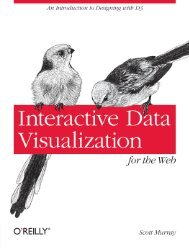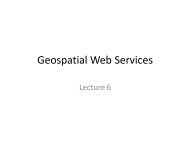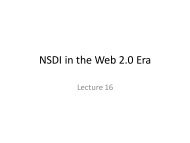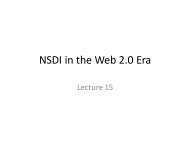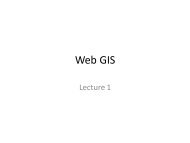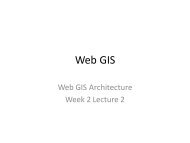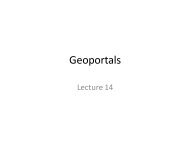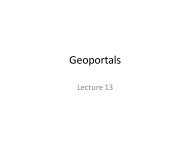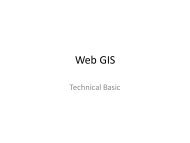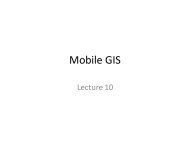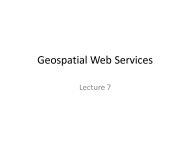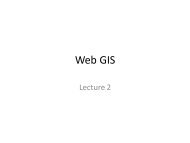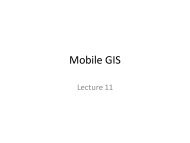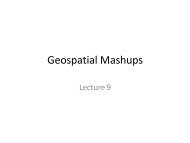geodesign-in-practice
- No tags were found...
Create successful ePaper yourself
Turn your PDF publications into a flip-book with our unique Google optimized e-Paper software.
Geodesign and Wildlife Corridors<br />
By Ryan Perkl, Assistant Professor, School of Landscape Architecture and Plann<strong>in</strong>g, University of Arizona<br />
Over the last decade, wildlife corridors have become a<br />
cornerstone for promot<strong>in</strong>g species persistence with<strong>in</strong><br />
conservation plann<strong>in</strong>g. While corridors have become an<br />
<strong>in</strong>creas<strong>in</strong>gly viable conservation strategy, issues still rema<strong>in</strong> <strong>in</strong><br />
translat<strong>in</strong>g modeled corridors beyond plans <strong>in</strong>to implementable<br />
designs. Although modeled corridors result <strong>in</strong> the del<strong>in</strong>eation<br />
of boundaries, they lack plann<strong>in</strong>g and design guidance for<br />
programm<strong>in</strong>g the appropriate vegetative types and patterns<br />
that may be desirable throughout the corridor. This represents<br />
a considerable implementation gap for practitioners <strong>in</strong>terested<br />
<strong>in</strong> employ<strong>in</strong>g corridors as part of a conservation or land-use<br />
plann<strong>in</strong>g strategy.<br />
This University of Arizona team proposes that a modeled<br />
corridor by itself is not a design but rather a first step toward<br />
design. Design requires attention to site-specific characteristics;<br />
functions; and even more qualitative variables, such as aesthetics,<br />
as a means of <strong>in</strong>form<strong>in</strong>g the f<strong>in</strong>e-gra<strong>in</strong>ed decisions necessary<br />
for implementation. Further, the team believes that the grow<strong>in</strong>g<br />
field of <strong>geodesign</strong> holds promise <strong>in</strong> mov<strong>in</strong>g toward this end, as it<br />
strikes the needed balance between develop<strong>in</strong>g the analytically<br />
based methods required <strong>in</strong> conservation plann<strong>in</strong>g and the<br />
graphic and communicative language necessary for design<br />
Saguaro and mesquite are among the many plants that should populate<br />
the corridors through the Sonoran Desert.<br />
implementation. As a result, this article illustrates and discusses<br />
the development of a new tool while showcas<strong>in</strong>g the marriage of<br />
<strong>geodesign</strong> with real-world applications <strong>in</strong> conservation plann<strong>in</strong>g<br />
and design.<br />
A New Tool—ADM<br />
The Automated Design Module (ADM) described here was used<br />
to <strong>in</strong>form the design of wildlife corridors with<strong>in</strong> the Sonoran<br />
Desert, an <strong>in</strong>credibly biologically diverse region that spans<br />
Geodesign <strong>in</strong> Practice: Design<strong>in</strong>g a Better World<br />
J10221<br />
Geodesign and Wildlife Corridors<br />
4




